
Dragon Tiles: Ancient and World Dragons
Medieval Maps and Monsters Bestiary Home Medieval Herbals How to Order Tile

Medieval Maps and Monsters Bestiary Home Medieval Herbals How to Order Tile
Medieval Dragons Ancient & World Dragons Post-Medieval Dragons Catalog
Other dragon tile pages: Medieval Dragons and Victorian and Folklore Dragons
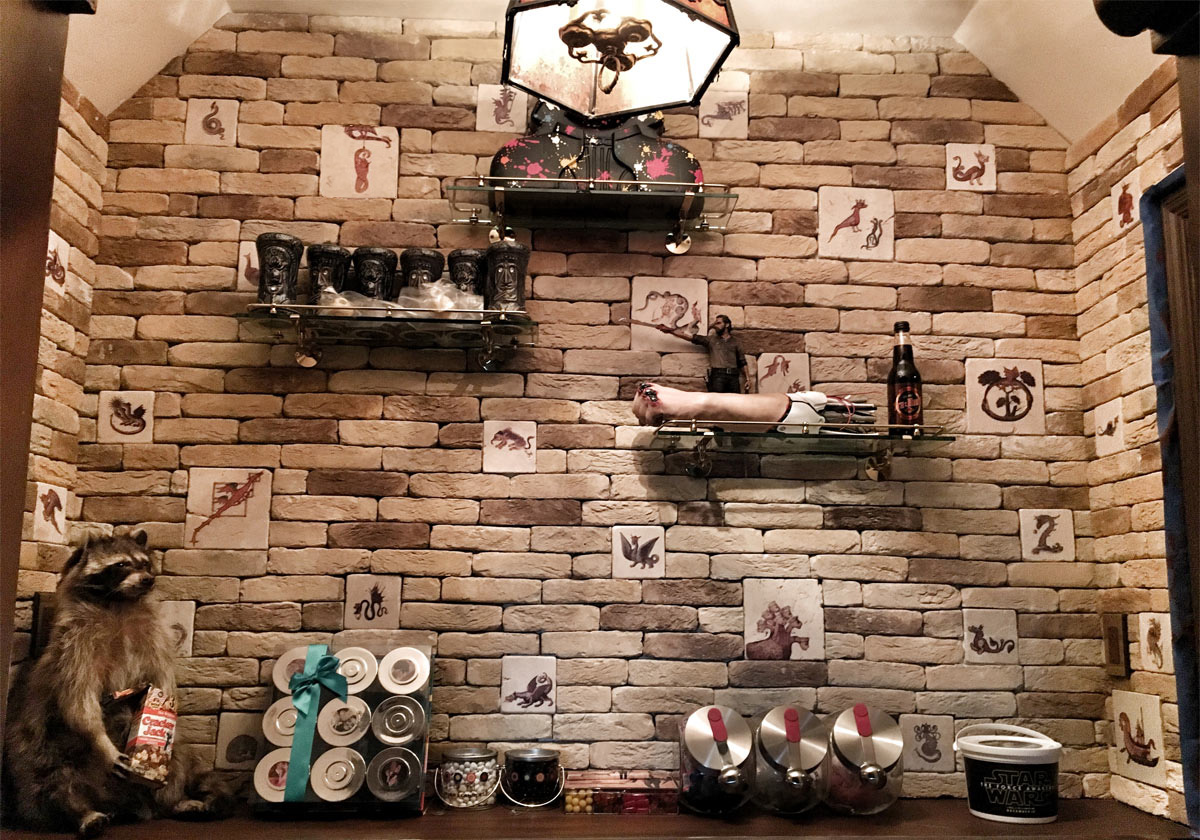
Dragon Bar, Hollywood Hills, California (Photo by Lydia Hearst)
We are as ignorant of the meaning of the dragon as we are of the meaning of the universe. ~Jorge Luis Borges

Dragons are found in nearly every culture. The earliest recorded dragon, Kur, the Sumerian dragon who stole the goddess Erishkigal shortly after the formation of the world, was first written about as early as 2700 BC. Dragons have a documented history on six continents (that we know).
Dragons in the Ancient and World Dragons fall into these general areas:
Cradle of Civilization dragons, such as the Sumerian Kur, oldest known dragon.
Asian dragons. Far eastern dragons here can be clasified by number of toes: Chinese imperial sky dragons have five toes, and often a fireball. Ordinary Chinese dragons, for want of a better word, have fewer toes, usually four. Japanese dragons traditional have three toes. You will also find here the Philippine moon-eating bakunawa and a Japanese nightmare-eating baku. While not a true dragon, a baku is nice to have in the event of bad dreams. Korean dragons are primarily benevolent creatures that bring blessings, rain and clouds, or protections; Korean dragons with opposable thumbs (four toes) can carry Yeouiju wish-granting amulet, while the less evolved three-toed dragons cannot.
Mythic dragons, the Islamic World dragon, the Peridexion tree of India, the Nordic dragon who wraps himself around the roots of Yggdrasil, the world tree. While many of these dragon images are medieval, the myths are ancient so I have included them in this section.
I currently have nearly 100 dragons available. Many dragon tiles have migrated as far as Japan, Norway, Tasmania, the UK, both coasts of Canada, Belgium, and throughout the United States. Each dragon is described briefly.
Some dragons have moved, due to the sheer number of dragons:
Post-Medieval and Victorian Dragons

Bakunawa, a giant sea serpent dragon from the Philippines with a mouth the size of a lake. The Bakunawa eats the seven moons and causes eclipses. To keep the moons from completely being swallowed, startle the Bakunawa by banging pots and pans. This will cause him to spit out the moon back into the sky.

The peridexion tree of India. Doves gather in the safety of the peridexion tree for its sweet fruit. The dragon fears the shadow of the peridexion tree and stays on its unshaded side. Doves in its tree or its shadow are safe; those leave it are caught and eaten by the dragon.
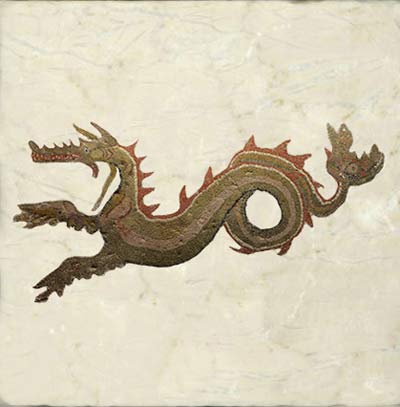
Ketos dragon mosaic, Italy AD 300. Ketos Trois a gigantic sea dragon sent by Poseidon to plague Troy as punishment for King Laomedon's failure to pay for the building of the sea walls. An oracle divined that only an offering of the king's daughter as sacrificed would rid of Troy of the beast. Hesione was chained to the rocks, where she was rescued by Herakles.

Qing dynasty dragon wih red pearl. This dragon was emblem on the Chinese flag up to 1912.
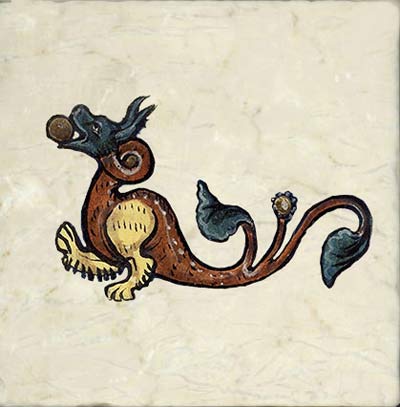
Hebrew dragon, 1277-1286, from illuminated manuscript in the British Museum

Two Norse dragons (Old Norse, dreki): Nidhoggr, Norse dragon who gnaws at the roots of Yggdrasill, the world tree. And Jormungandr, the Midgard serpent. Thor used the head of Hymir's largest ox as fishing bait. From a 17th century Icelandic manuscript.

Carta Marina sea dragon - from the 'Carta Marina' map of Scandinavia and Iceland produced between 1527 and 1539 by Olaus Magnus, the archbishop of Uppsala, after his exile to Danzig. Technically, a medieval dragon, but included here because Nordic dragons themselves are pre-medieval.
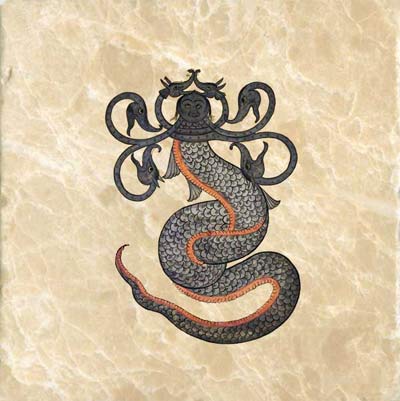
Islamic Wonders of Creation Dragon from an Illumination of Persian version the 'Aja'ib al-makhluquat, circa 1650.
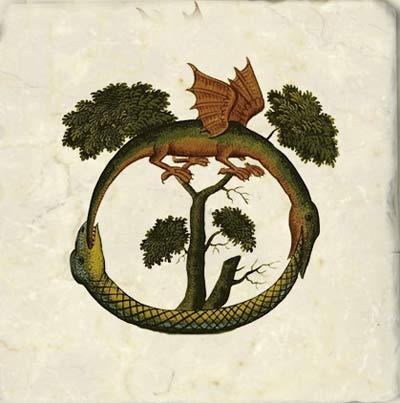
World dragon from the Clavis Artis, a German alchemical manuscript translated from Arabic into German in 1236

Aztec Quetzalcoatl dragon devouring a man

Zoroastrian dragon, late 17th century German translation

Blue Wish-granting Water dragon (three toes)

Japanese fire dragon (three toes)
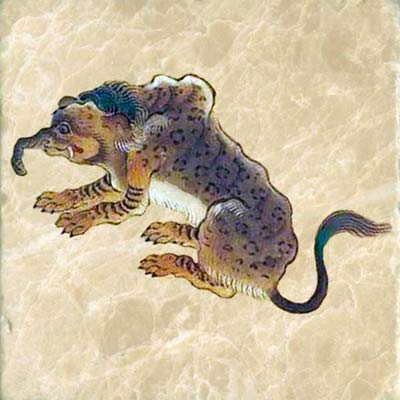
Early Japanese nightmare-eating baku. If you wake with a bad dream, call out to the baku who will come and eat the bad dream.

Midgard dragon. 17th century Icelandic

Kur stole the goddess Ereshkigal immediately upon the formation of the world. Sumerian, 2000 B.C.
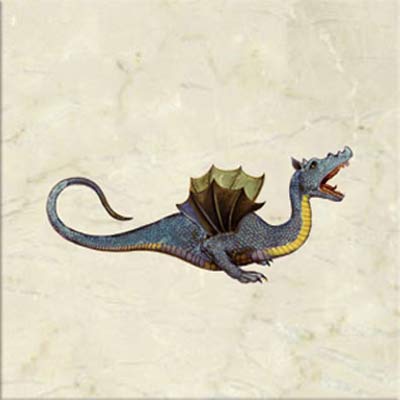
Draco Aethiopicus alarus, Winged dragon of ethiopia, 1572

Red Qing dynasty dragon
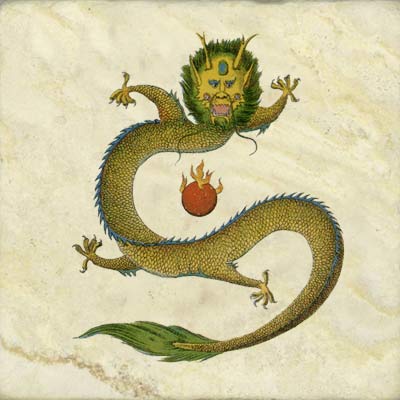
Imperial Sky dragon (five toes) with fireball

Australian Bunyip dragon

Viking dragonship from early Anglo-Saxon star chronicle

Korean four-toed dragon from the drum at Sungnyemun in South Korea

Ouroboros dragon from lost alchemical tract by Synesius, 4th century Byzantium

Kur, Chaos monster and the first known dragon. Sumerian, 2000 B.C.
Title: Dragons
Tile: Tumbled Marble Stone
Size: 6 inch square tiles (15.4 cm)
Thickness: 3/8 inch (1 cm)
Weight: 22 ounces (.62 kg) each tile
*Also available in 4 inch tiles
4-inch Dragons: $68
6-inch Dragons: $77
Prices do not include shipping costs.
William Morris Tile • Site Map • Catalog • How to Order Tile • Privacy Statement • Contact
Copyright information: Images of tile products on this website are ©William Morris Tile, LLC. They are derivative works requiring considerable creative effort. You are welcome to use the images, with attribution, for any non-commercial purpose, including displaying them on your blog or personal website. You may not use them for any commercial purpose without written permission, including but not limited to creating counted cross-stitch patterns, calendars, or any other commercial purpose. Contact me for images.